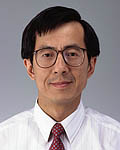
Professor Hung is a historian specializing in modern Chinese cultural history. He received his BA (Philosophy) from the Chinese University of Hong Kong and his MA (Regional Studies - East Asia) and PhD (History and East Asian Languages) from Harvard University. Before joining the Hong Kong University of Science and Technology in 1994, he was Professor of History and the Jane and Raphael Bernstein Professor of Asian Studies at Carleton College in Minnesota.
Research Interests
Modern Chinese cultural history; contemporary Chinese rituals and politics; Chinese popular and folk culture; political space and history.
Representative Publications
(A) Books
《地標:北京的空間政治》(Landmarks: Politics of Space in Beijing). Hong Kong: Oxford University Press, 2011.
Mao's New World: Political Culture in the Early People's Republic. Ithaca: Cornell University Press, 2011.
《新文化史與中國政治》(The New Cultural History and Chinese Politics). Taipei: Yifang Publishing Company, 2003.
War and Popular Culture: Resistance in Modern China, 1937-1945. Berkeley: University of California Press, 1994.
Going to the People: Chinese Intellectuals and Folk Literature, 1918-1937. Cambridge, Mass.: Council on East Asian Studies, Harvard University, 1985. Chinese translation: 《到民間去:一九一八年至一九三七年的中國知識分子與民間文學運動》, trans. by Dong Xiaoping. Shanghai: Shanghai wenyi chubanshe, 1993.
(B) Articles and Book Chapters
"Tiananmen Square: The Grand Political Theater of the Chinese Communist Party." LA+ (Landscape Architecture Plus), Department of Landscape Architecture, School of Design, University of Pennsylvania, forthcoming.
"Turning a Chinese Kid Red: Kindergartens in the Early People’s Republic." Journal of Contemporary China, 23.89 (September 2014): 841-863.
"Inside a Chinese Communist Municipal Newspaper: Purges at the Beijing Daily." Journal of Contemporary History, 49.2 (April 2014): 341-365.
"A Political Park: The Working People's Cultural Palace in Beijing." Journal of Contemporary History 48.3 (July 2013): 556-577.
"The Cultural Palace of Nationalities: Ethnicities under One Roof?" Journal of Contemporary History 47.3 (July 2012): 572-593.
"The Politics of National Celebrations in China." In The People’s Republic of China at 60: An International Assessment, ed. by William C. Kirby, pp. 357-372. Cambridge, Mass.: Harvard University Asia Center, 2011.
"The Anti-Unity Sect Campaign and Mass Mobilization in the Early People's Republic of China." The China Quarterly 202 (June 2010): 400-420.
"The Cult of the Red Martyr: Politics of Commemoration in China.” Journal of Contemporary History 43.2 (April 2008): 279-304.
"Oil Paintings and Politics: Weaving a Heroic Tale of the Chinese Communist Revolution.” Comparative Studies in Society and History 49.4 (October 2007): 783-814.
"Mao’s Parades: State Spectacles in China in the 1950s.” The China Quarterly 190 (June 2007): 411-431.
〈空間與政治:擴建天安門廣場〉(Space and Politics: Expanding Tiananmen Square). In《兩岸分途:冷戰初期的政經發展》 (Parting Ways: Politics and Economics across the Taiwan Straits since 1949), ed. by Chen Yung-fa, pp. 207-259. Taipei: Institute of Modern History, Academia Sinica, 2006.
"The Red Line: Creating a Museum of the Chinese Revolution.” The China Quarterly 184 (December 2005): 914-933.
"The Dance of Revolution: Yangge in Beijing in the Early 1950s.” The China Quarterly 181 (March 2005): 82-99.
"Revolutionary History in Stone: The Making of a Chinese National Monument.” The China Quarterly 166 (June 2001): 457-473.
〈生與死的節日:中共的通俗政治文化〉(Festivals Celebrating Life and Death: The Popular Political Culture of the Chinese Communist Party). In《二十世紀的中國與世界 》(China and the World in the Twentieth Century), ed. by Chang Chi-hsiung, pp. 879-920. Taipei: Institute of Modern History, Academia Sinica, 2001.
"Repainting China: New Year Prints (Nianhua) and Peasant Resistance in the Early Years of the People’s Republic.” Comparative Studies in Society and History 42.4 (October 2000): 770-810.
〈現代藝術與政治:廖冰兄漫畫中的困局〉(Modern Art and Politics: The Predicament in Liao Bingxiong’s Cartoons). In《文藝理論與通俗文化》(Literary and Artistic Theories and Popular Culture), ed. by Peng Hsiao-yen, pp. 279-345. Taipei: Institute of Chinese Literature and Philosophy, Academia Sinica, 1999.
"Two Images of Socialism: Woodcuts in Chinese Communist Politics.” Comparative Studies in Society and History 39.1 (January 1997): 34-60.
"The Politics of Songs: Myths and Symbols in the Chinese Communist War Music, 1937-1949.” Modern Asian Studies 30.4 (October 1996): 901-929.
"The Fuming Image: Cartoons and Public Opinion in Late Republican China, 1945-1949.” Comparative Studies in Society and History 36.1 (January 1994): 122-145.
"Reeducating a Blind Storyteller: Han Qixiang and the Chinese Communist Storytelling Campaign.” Modern China 19.4 (October 1993): 395-426.
"Paper Bullets: Fan Changjiang and New Journalism in Wartime China.” Modern China 17.4 (October 1991): 427-468.
"New Wine in Old Bottles: The Use of Folk Literature in the War of Resistance against Japan."《漢學研究》(Chinese Studies) 8.1 (June 1990): 401-423.
"War and Peace in Feng Zikai’s Wartime Cartoons.” Modern China 16.1 (January 1990): 39-83.
"Female Symbols of Resistance in Chinese Wartime Spoken Drama." Modern China 15.2 (April 1989): 149-177.
Retired: Wednesday, July 1, 2015